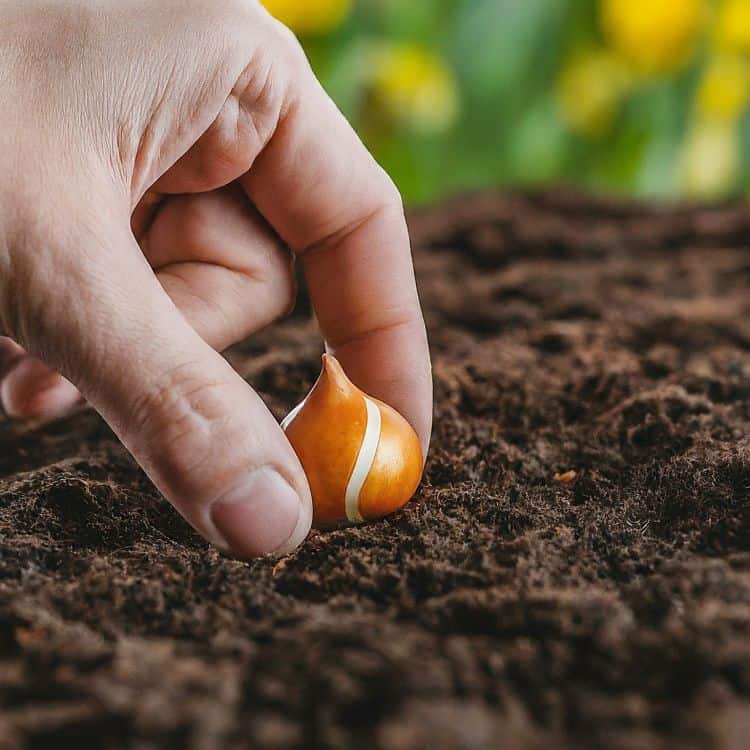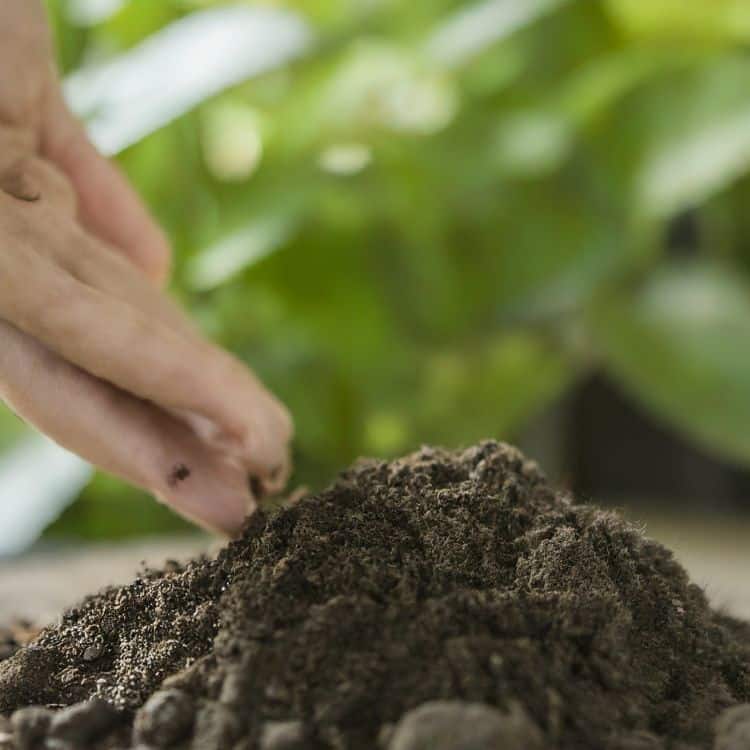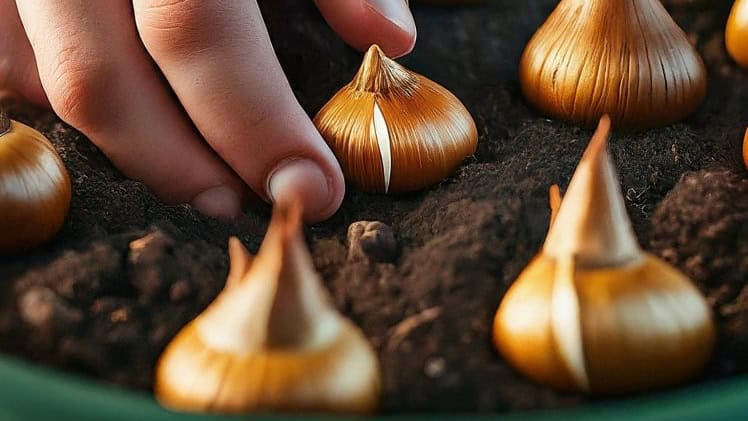As the chill of winter begins to fade and the days grow longer, gardeners eagerly anticipate the burst of colors that signal the arrival of spring. While many associate bulbs with autumn planting for spring blooms, there’s a lesser-known joy in planting bulbs during spring to adorn your garden with dazzling summer flowers. Spring is a time of renewal and growth, making it the perfect season to breathe life into your outdoor space with vibrant bulbs. Whether you’re a seasoned gardener or just starting, it is ideal to plant bulbs in spring for summer flowers, igniting your garden with vibrant colors and fragrant blooms as the days grow longer and warmer.
Contents
- 1 Plant bulbs in spring for summer flowers
- 2 Choosing the Right Bulbs:
- 3 Preparing the Soil For Plant bulbs in spring for summer flowers:
- 4 Planting Bulbs:
- 5 5 Techniques For Plant bulbs in spring for summer flowers:
- 6 5 Caring tips for Plant bulbs in spring for summer flowers:
- 7 FAQS
- 8 Plant Bulbs in Spring for Summer Flowers
- 9 Author
Plant bulbs in spring for summer flowers

Growing flower bulbs is simple because they store their nutrients. The term “bulb” covers various types of plants such as corms, tubers, and rhizomes when they’re dormant. A genuine bulb is a large bud that stores food and develops roots from the bottom, while stems, flowers, and leaves grow from the top.
Bulbs planted in spring for summer, often referred to as tender bulbs, can’t withstand freezing temperatures. In regions with zones 7 and above, they need to be dug up in the fall. These bulbs, also known as summer-blooming bulbs, are planted in spring and blossom during the summer. Bulbs like tulips and daffodils, planted in the fall, are called fall-planted bulbs and bloom the following spring.
Choosing the Right Bulbs:
When embarking on the journey of selecting bulbs for spring planting, it’s essential to choose varieties that not only endure warmer weather but also promise a spectacular display of colors throughout the summer months. Among the many options available for plant bulbs in spring for summer flowers, popular choices include the elegant lilies, the vibrant dahlias, the stately gladioli, and the charming begonias. However, the key lies not only in selecting these varieties but also in understanding their specific requirements.
Consider the unique needs of each bulb variety to ensure they thrive in your garden’s environment. Assess factors such as sunlight exposure, soil type, and moisture levels to create an optimal growing environment for your chosen bulbs. By carefully selecting and accommodating the preferences of each bulb variety, you lay the foundation for a thriving and visually stunning summer garden that will delight you and your visitors alike.
Preparing the Soil For Plant bulbs in spring for summer flowers:

Before planting your bulbs, prepare the soil to provide them with the best possible growing conditions. Choose a well-draining location with fertile soil enriched with organic matter, such as compost or aged manure. Loosen the soil to a depth of about 6 to 8 inches to allow the bulbs to establish strong roots and access essential nutrients. Additionally, consider the sunlight requirements for plant bulbs in spring for summer flowers, ensuring they receive adequate light throughout the day for optimal growth and blooming.
Planting Bulbs:
Determining the Ideal Planting Time:
In regions encompassing Zones 4 to 7, characterized by colder winters, the optimal time for plant bulbs in spring for summer flowers is when the ground cools down, typically with evening temperatures averaging between 40° to 50°F. It’s advisable to plant them at least 6 to 8 weeks before the ground starts freezing. Ideally, this should be done promptly after purchasing the bulbs, although they can be refrigerated if necessary until planting. On the other hand, Plant bulbs in spring for summer flowers during mid to late spring.
In warmer climates, designated as Zones 8 to 10, spring-flowering bulbs require a chilling period in the refrigerator for about 6 to 10 weeks before they can be planted. The exact duration depends on the specific type of bulb. Summer-flowering bulbs, however, can be planted early to mid-spring.
Average Planting Times for Spring Bulbs:
- September to October: Applicable for Zones 4 and 5
- October to early November: Suitable for Zones 6 and 7
- November to early December: Recommended for Zones 8 and 9
- Late December to early January: Pertinent for Zone 10
Average Planting Times for Summer Bulbs:
- Late March to May: Suitable for Zones 8 to 10
- May to June: Applicable for Zones 4 to 7
Selecting the Optimal Planting Site:
Bulbs thrive in areas with adequate drainage and sunlight exposure, making them adaptable to various planting environments. Ensuring proper drainage is paramount to prevent bulb rot. They particularly favor loamy or slightly sandy soil, which facilitates both drainage and nutrient absorption.
Early-spring blooming varieties can be strategically placed beneath deciduous trees, allowing them to receive ample sunlight before the tree foliage obstructs it. However, it’s important to note that their optimal blooming may only occur in the first year, as subsequent flowering seasons require sunlight later in the season to accumulate energy for the following year’s blossoms.
5 Techniques For Plant bulbs in spring for summer flowers:
Unlike bulbs planted in the fall, spring-planted bulbs require a different approach to ensure successful growth and blooming. Follow these steps to plant bulbs in spring for summer flowers with care:
Digging Holes:
Using a trowel or bulb planter, dig holes in the soil according to the recommended depth for each specific bulb variety. As a general guideline, aim to plant bulbs at a depth approximately three times their diameter. This ensures that they are adequately positioned for healthy root development and optimal growth.
Spacing:
Carefully consider the mature size of each bulb variety when spacing them out in your garden. Providing ample room between bulbs allows for proper air circulation and prevents overcrowding, which can lead to competition for nutrients. By spacing bulbs appropriately, you create an environment conducive to robust growth and flourishing blooms.
Orientation:
When placing bulbs into the prepared holes, pay attention to their orientation. Position the bulbs with the pointed end facing upwards to encourage healthy growth and ensure that they emerge from the soil correctly. While many bulbs will sprout regardless of their orientation, planting them with the pointed end up ensures optimal conditions for initial growth and development.
Backfilling:
After placing the bulbs in the holes, gently backfill the surrounding soil, taking care not to disturb the bulbs’ positioning. Press the soil lightly to eliminate any air pockets and establish good soil-to-bulb contact. This helps to secure the bulbs in place and provides them with the necessary support for healthy root establishment.
Watering:
Following planting, thoroughly water the bulbs to settle the soil and initiate the growth process. Adequate moisture is essential for bulb development, but it’s crucial to avoid overwatering, as excessive moisture can lead to bulb rot. Maintain consistent soil moisture levels to promote healthy growth without waterlogging, ensuring that your bulbs have the best possible start in their new environment.
5 Caring tips for Plant bulbs in spring for summer flowers:
Once your bulbs are in the ground, proper care is essential to help them thrive and reach their full potential. Here are some tips to keep your bulbs healthy and vibrant throughout the summer:
Mulching:
To maintain optimal soil conditions and support bulb health, consider applying a layer of mulch around the planted area. Mulch serves various purposes, including conserving moisture, suppressing weed growth, and regulating soil temperature. Organic mulches, such as shredded bark or straw, are highly recommended as they decompose over time, enriching the soil with nutrients.
Fertilizing:

Ensure the continued vigor and vitality of your bulbs by providing them with essential nutrients through fertilization. Choose a balanced fertilizer or a specially formulated bulb fertilizer to promote healthy growth and abundant blooms. Adhere to the manufacturer’s instructions regarding application rates and timing to prevent over-fertilization, which can be detrimental to bulb health.
Staking:
For tall or heavy-flowered bulb varieties prone to bending or toppling over, staking is essential to provide adequate support and maintain upright growth. Install stakes or supports early in the growing season, ensuring they are securely anchored in the soil. Regularly monitor the growth of your bulbs and adjust the stakes as needed to accommodate their development and prevent potential damage.
Deadheading:
Promote continuous blooming and redirect the plant’s energy towards new growth by regularly removing spent flowers. Deadheading not only enhances the aesthetic appeal of your garden but also prevents the bulbs from diverting resources towards seed production. Be diligent in removing faded blooms to encourage the emergence of fresh, vibrant flowers throughout the growing season.
Protection:
Safeguard your bulbs from potential threats posed by pests and diseases to maintain their health and vigor. Keep a watchful eye on your garden and promptly address any signs of pest infestation or disease development. Consider implementing organic pest control methods or practicing companion planting to deter pests and establish a balanced ecosystem conducive to bulb growth and flowering. By prioritizing protective measures, you can safeguard the beauty and longevity of your spring-planted bulbs, ensuring a bountiful display of blooms for seasons to come.
FAQS
When is the best time to plant bulbs in spring for summer flowers?
In colder regions (Zones 4 to 7), aim to plant bulbs in spring for summer flowers when the ground cools down, typically 6 to 8 weeks before freezing temperatures begin. In warmer climates (Zones 8 to 10), spring-flowering bulbs may require chilling in the refrigerator before planting.
Which bulbs are suitable for planting in spring for summer blooms?
Some popular options include lilies, dahlias, gladioli, and begonias. Ensure you choose varieties that thrive in warmer weather conditions.
What techniques should I follow when planting bulbs in spring?
Follow steps such as digging proper holes, spacing bulbs appropriately, orienting them correctly, backfilling with soil, and watering thoroughly. These techniques ensure optimal growth and blooming.
Can I plant bulbs in spring and expect them to bloom the same year?
Yes, bulbs planted in spring typically bloom during the same summer season, providing a delightful burst of color to your garden.
Plant Bulbs in Spring for Summer Flowers
Plant bulbs in spring for summer flowers offer an exciting opportunity to infuse your garden with vibrant colors and fragrant blooms during the same summer season. Whether you’re a seasoned gardener or just starting, the joy of witnessing your bulbs flourish and transform your outdoor space is unmatched.
By following proper planting techniques and providing attentive care, you can ensure a spectacular display of summer flowers that will delight both you and your visitors. Embrace the beauty of spring planting and enjoy the bountiful rewards of a flourishing garden filled with the charm and elegance of summer bulbs. Let your garden come alive with the vibrant hues and captivating scents of summer flowers, making each day a celebration of nature’s beauty.

